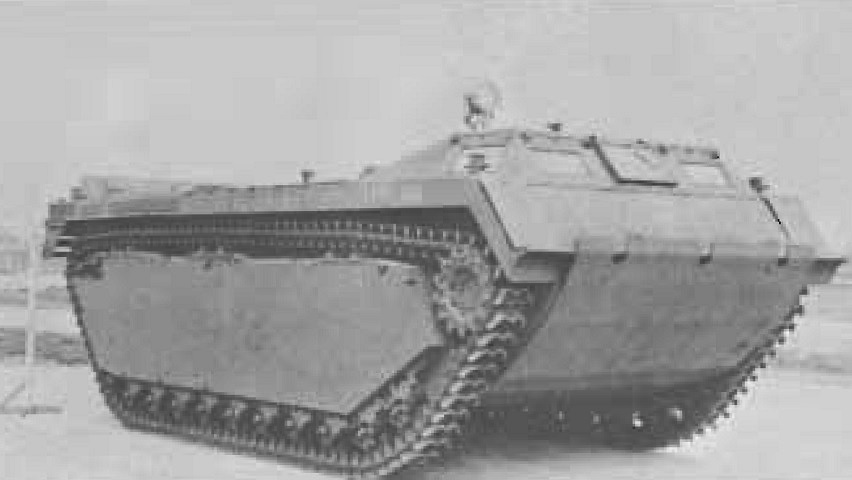
Landing Vehicle, Tracked, Mark 3.

Compared to the LVT2 and LVT4, the LVT3's driver was placed close to the vehicle's bow, which improved visibility. Applique armor has been mounted on the lower surface of the cab front on this machine. The tracks of the LVT3 are double-pin and rubber bushed, in contrast to those found on the earlier types of amphibians. (Picture from Research, Investigation and Experimentation in the Field of Amphibian Vehicles.)
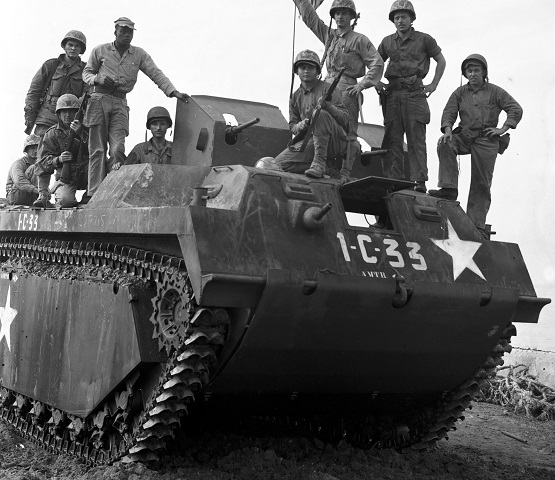
Applique armor has been installed on both on the upper and lower portions of the cab front on this vehicle. The central cab window is open, and the vision blocks and bow machine gun mount take advantage of the front windows visible in the vehicle above. (Picture taken 14 Sep 1950; available from the National Archives.)
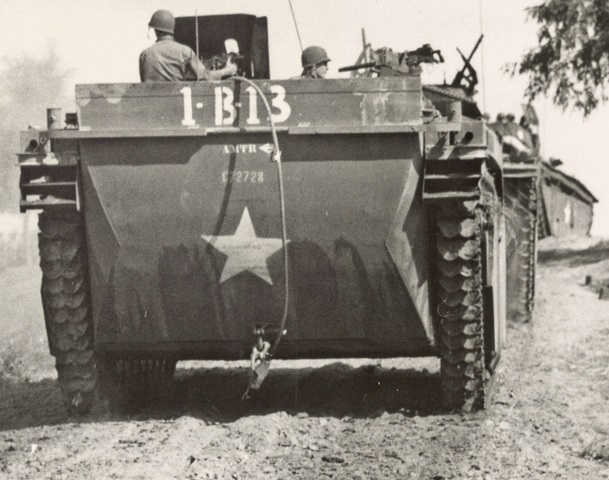
Visible from behind, the rear ramp extended above the sides of the cargo compartment. (Official U.S. Marine Corps Department of Defense photo; available from the National Archives.)
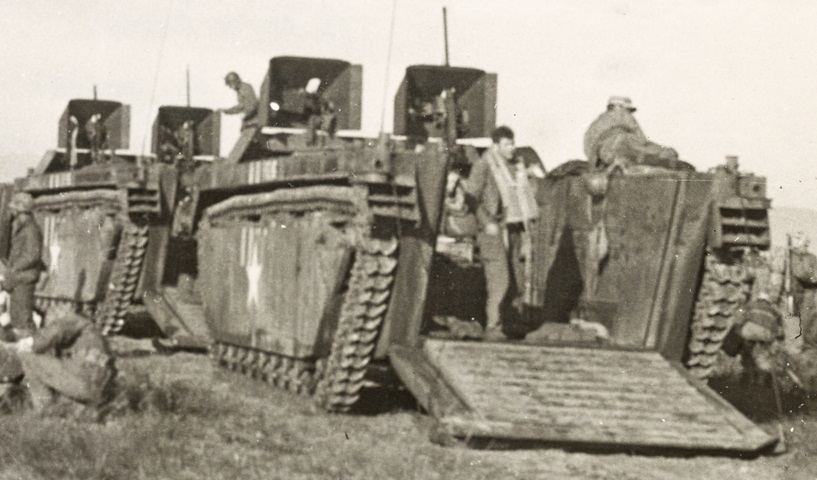
The cargo compartment interior and insides of the gun shields can be seen in this image. (Official U.S. Marine Corps Department of Defense photo; available from the National Archives.)
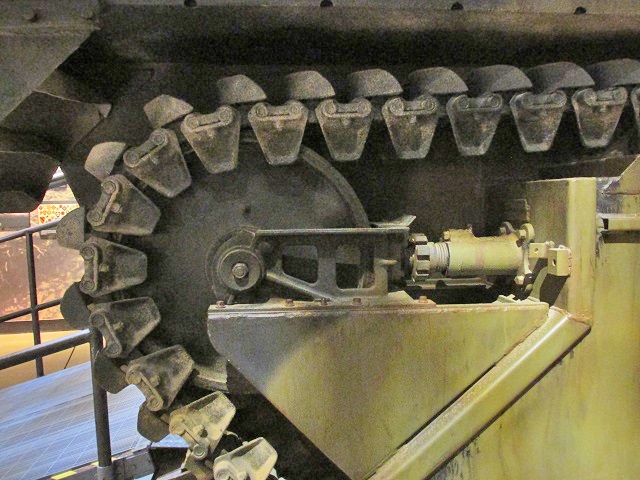
The rear idler wheel and track tension adjustment mechanism are highlighted here.
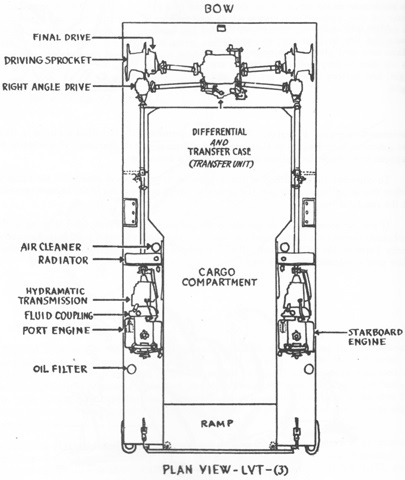
A schematic of the vehicle's powertrain is sketched here. (Picture from "Meet the LVT-(3): The Bushmaster.")
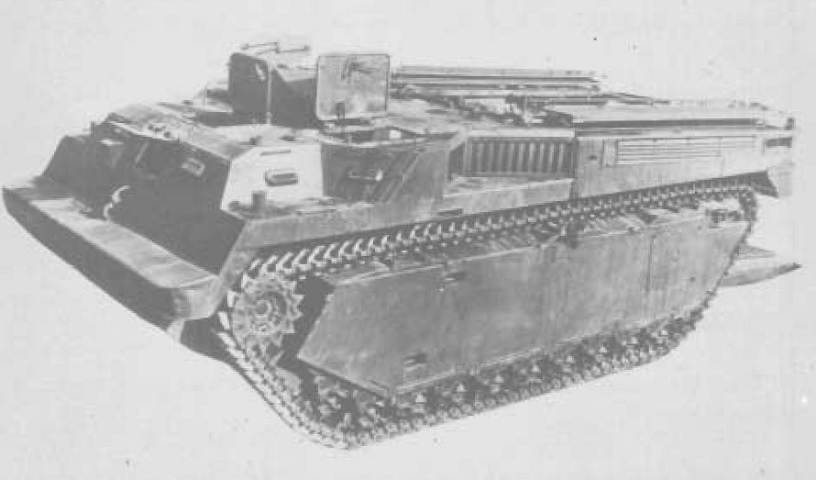
The covered cargo compartment was the most significant change on the LVT3C. The rear ramp is down on this vehicle, and the covers for the cargo compartment are folded open. The new open crew hatches somewhat shroud the machine gun turret on the cab roof, but the extension to the bow is obvious when compared with the vehicle above. Note how the top deck is sloped towards the rear to ease departure from landing ships. (Picture from Research, Investigation and Experimentation in the Field of Amphibian Vehicles.)
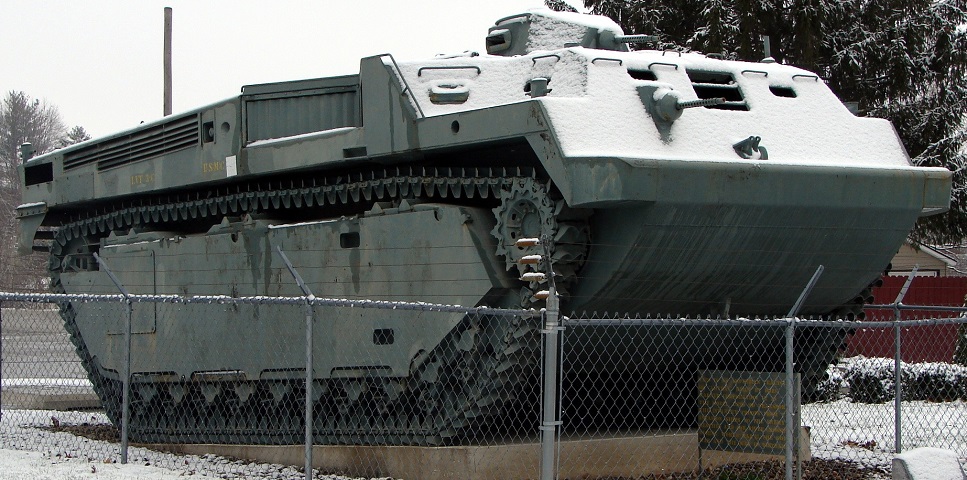
A better view of the machine gun turret is provided in this snowy image. A vision block was installed on each side, and a periscope and ventilator dome could be found on its roof. The bow machine gun is represented on this vehicle as well. (Picture courtesy Warren Kuntz.)
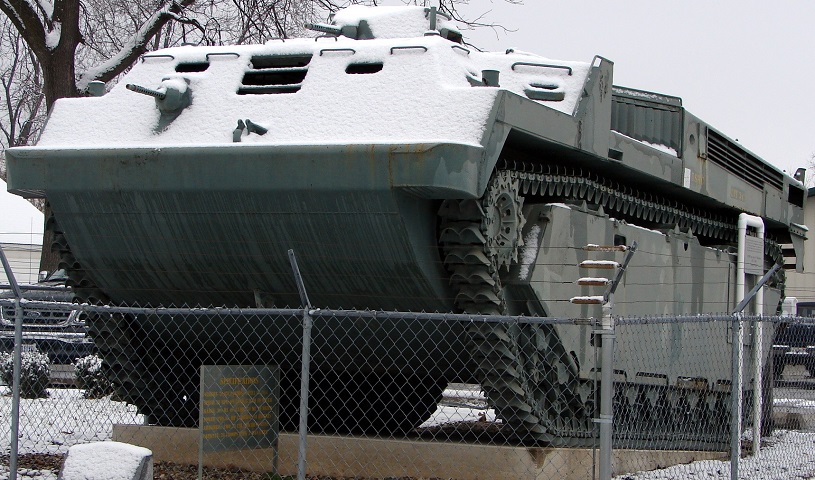
Compared to the earlier vehicles, the armor added to the sides can also be seen. The vision blocks for the drivers are apparently missing from this machine. (Picture courtesy Warren Kuntz.)
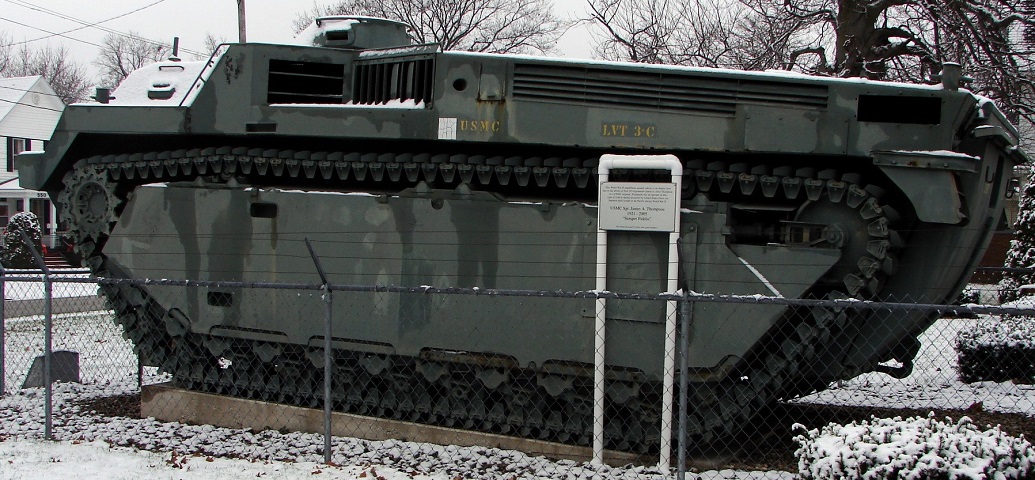
The downward slope of the vehicle's new roof can more easily be seen in profile. (Picture courtesy Warren Kuntz.)
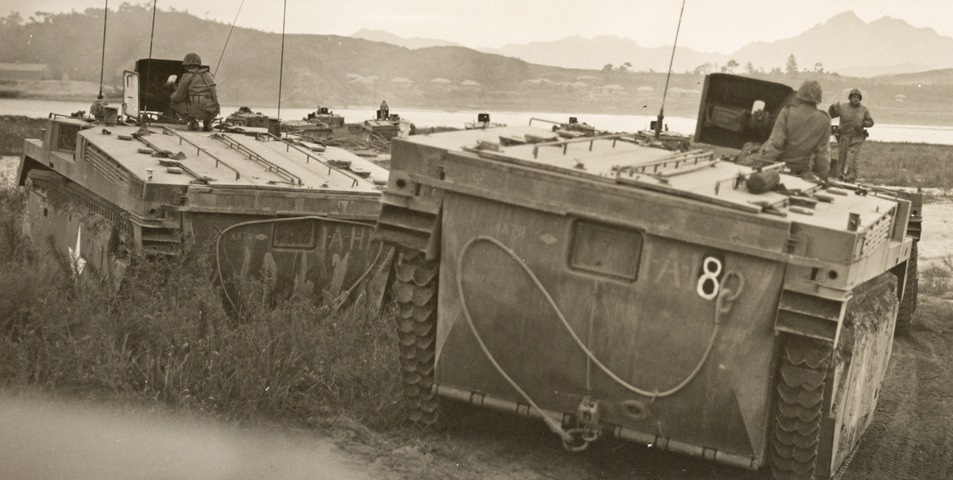
The folding cargo covers are closed on these machines, which are prepared to cross the Han River in the drive on Seoul. These tractors are armed with a machine gun and gun shield instead of a turret. (Picture taken 20 Sep 1950 by Sgt Keating; available from the National Archives.)
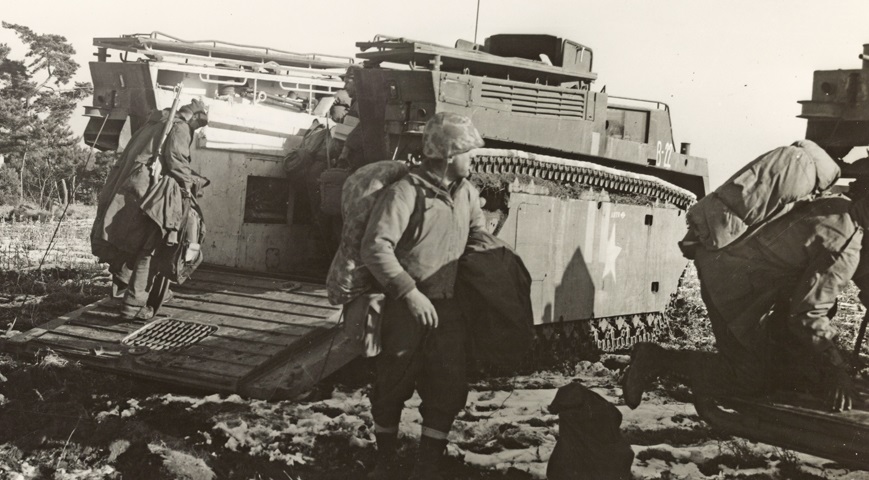
With the rear ramp and cargo covers opened, the interior compartment can be seen. The hollow interiors of the cargo compartment covers atop of the sponsons were used for stowage. These marines were part of the Headquarters and Service Company, 2nd Battalion, 7th Marines, and were departing Hŭngnam Harbor after the breakout from the Chosin Reservoir. (Picture available from the National Archives.)
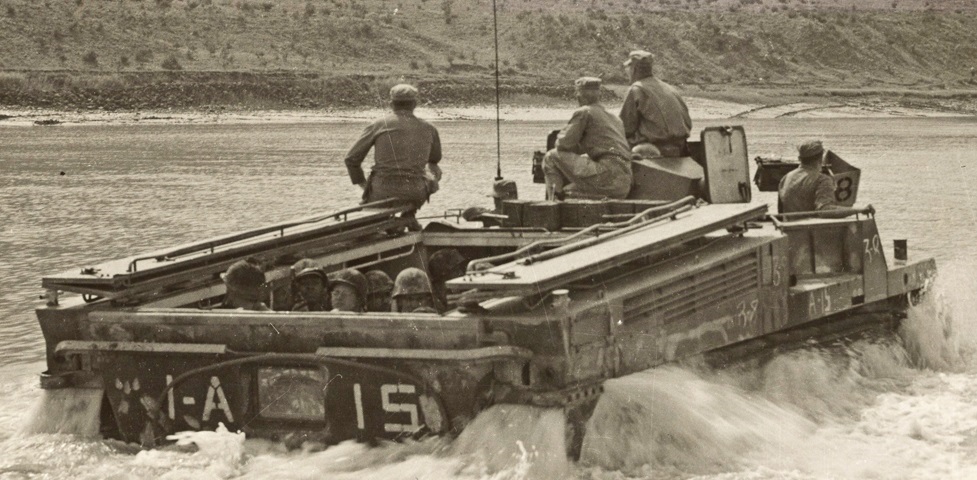
The effectiveness of the splash deflectors on either side of the rear hull is illustrated in this image of a tractor underway. The depth of the cargo compartment can be estimated by the marines visible inside. This vehicle belonged to the 1st Amphibious Tractor Battalion, Kimpo Provisional Regiment, and was ferrying men of the 2nd Battalion, 7th Marines, across the Imjin River during a simulated amphibious landing. (Picture by MSgt Frank W. Sewell; available from the National Archives.)
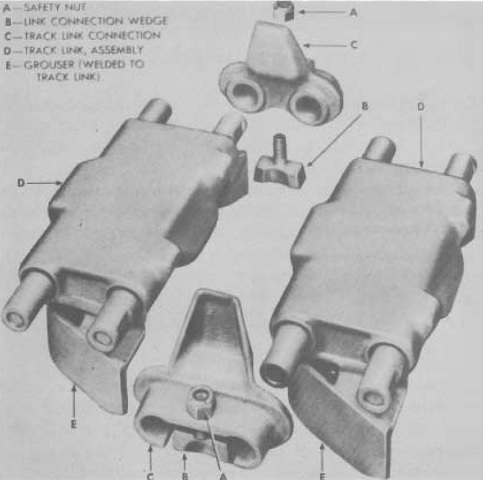
An exploded view of the inner surface of the vehicle's track is shown here. In contrast to earlier amphibians, LVT3 ran on a double-pin rubber-bushed track similar to that found on light and medium tanks. The track blocks were hollow steel, and the 2.75"- (6.99cm-) high cleat was welded to the outer face of each track block. The rubber bushings provided better wear characteristics against sand and salt water than the previous tracks' many bearings. (Picture from Research, Investigation and Experimentation in the Field of Amphibian Vehicles.)